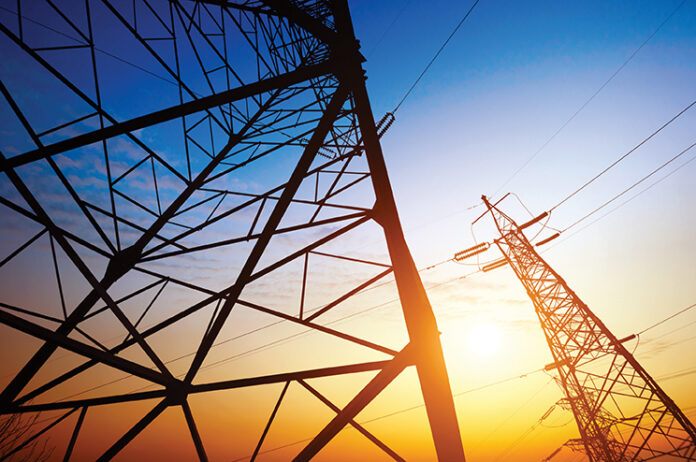
As we finalized this issue of SHALE Magazine early in March, the mid-February arctic blast and power blackouts that hit Texas were at the top of everyone’s minds, ours included. The Texas legislature had just concluded two full days of hearings on the matter on February 25-26, and the chair of the Public Utility Commission, DeAnn Walker, resigned on March 1, after Lt. Governor Dan Patrick had called on her and Bill Magness, the CEO of the Electric Reliability Council of Texas (ERCOT) to do so.
As of this writing, Magness remained gainfully employed – very gainfully, actually, given his impressive salary of $876,334 per year – but how much longer that can last is anyone’s guess. To be sure, it seems likely that, although half of its board of directors have already voluntarily resigned, more heads will roll within that organization after its miserable failure to ensure the Texas power grid was adequately prepared to withstand the state’s latest winter blast. The politicians are all still scrambling around to find ways to avoid taking the blame for the blackouts – which denied power at one point to 4.5 million citizens and resulted in the deaths of more than 30 Texans – and will be looking for more lambs to sacrifice.
But if this effort to look for solutions to the grid’s vulnerabilities devolves into nothing more than the ritual sacrificing of scapegoats, then nothing will have been solved at all. In her resignation statement, Ms. Walker repeated what we at SHALE Magazine have been writing since the blackouts started on the morning of Monday, February 15: That every power source and everyone involved in the system failed to some extent.
“The gas companies, the Railroad Commission, the electric generators, the transmission and distribution utilities, the Electric Reliability Council of Texas, and finally the Legislature all had responsibility to foresee what could have happened and failed to take the necessary steps for the past ten years to address issues that each of them could have addressed,” Walker wrote, urging all involved to step up and acknowledge their own culpability in the disaster. Although the rest of her letter was somewhat petulant and unapologetic for her own failure to do her job of properly informing the legislature of the system’s lack of winterization and other vulnerabilities, she was correct on that point.
Her choice to name “the gas companies” first on her list, though, is more than a little bit irritating to me given that, despite the freeze-ups that did occur among some gas pipelines and power plants, the natural gas system did the yeoman’s work in ensuring that the entire grid didn’t ultimately collapse, providing more than 70% of all electricity generated in the state during the depths of the freeze event from February 15 through 17. In a statement on February 16, ERCOT said that we came within a little more than 4 minutes of such a collapse taking place, noting that had that happened, millions of Texans would have been without electricity for months.
We also discovered shortly after the crisis had passed that a great deal of the freezing situation related to natural-gas pipelines and power plants happened because of actions taken by ERCOT itself. During a February 21 appearance on SHALE Magazine’s “In The Oil Patch Radio Show,” Texas Railroad Commission Chairwoman Christi Craddick noted that part of the issue that caused some natural-gas power plants to fall off the grid on February 14-15 was the fact that the rolling blackouts implemented by ERCOT ended up cutting off electricity to several large natural gas compressor stations in West Texas. Without proper compression, natural gas pipelines cannot maintain the pressure needed to move natural gas to the power plants, causing the plants to freeze up.
This, frankly, stunned and amazed me since, after a very similar winter storm in 2011, the industry worked closely with ERCOT and the PUC to develop a plan that should have prevented this same tragic mistake from occurring again in the future.
“Back in 2011,” I said, “rolling blackouts unintentionally shut down electricity needed to get gas to power stations. Are you telling me the same problem happened again this time, ten years later? How could this have happened again?”
Craddick responded, “The biggest challenge we had this week was reminding people that we’re all very integrated. If you don’t have power going into gas processing plants, you can’t move gas. Solar wasn’t working, and diesel freezes in certain temperatures, so finally, on Tuesday, we had a conversation about the need for power. They [ERCOT] finally seemed to understand that, and we sent specific coordinates to them so they would turn the power back on in those oil fields.”
And it gets even worse than that. The post-event hearings by the house and senate revealed that ERCOT’s rolling blackouts also denied electricity to several natural gas-fired power plants, causing them to shut down as well. At the very least, these painful incidents point to the need for much better communication between ERCOT officials and the industries, so that these critical facilities aren’t cut off in the future.
But much more than improvements to communication must be done in the wake of this latest failure of the Texas grid. It was painfully obvious following the major freeze and blackout event of 2011 that many crucial facilities had not been properly winterized, yet no one in a position of authority in the state was able to summon the political will to act to require that to happen. That is a failure of the political system – the legislature and the PUC – not of ERCOT management.
Over the intervening decade, however, ERCOT must bear responsibility for failing to fulfill its duty to properly inform the PUC, the legislature and the public about the system’s ongoing vulnerabilities. What we have gotten from officials there instead has been a ton of boasting about how much wind and solar they’ve been adding to the grid, both of which utterly failed to perform during the arctic storm.
ERCOT, the PUC and the legislature have also failed to work to ensure that the system maintains an adequate amount of reserve base-load-generating capacity that can be brought online to increase power generation during such emergencies. While we’ve been adding all of this wind and solar to our grid since 2011, the state has added less than 2mwh of natural-gas generating capacity and zero nuclear or coal capacity. During those same years, our state’s population has risen by 15%, and our economy has grown by more than 30%.
Texas’s deregulated energy market relies on the market organically creating price signals that naturally incentivize the building of new power capacity as it is needed. Such signals ceased to exist long ago, yet no one in a position of authority has acted to address that glaring issue via legislation or regulatory actions. This second grid failure in just 11 years demands that this must now change, too.
Demanding resignations and holding executives accountable in the wake of such disasters is to be expected to some extent. But no Texan should tolerate another failure by all involved to also enact real systemic reforms designed to prevent another disastrous grid failure the next time a major arctic storm moves across the Red River. Texans deserve better than that from their public officials.
About the author: David Blackmon is the Editor of SHALE Oil & Gas Business Magazine. He previously spent 37 years in the oil and natural gas industry in a variety of roles — the last 22 years engaging in public policy issues at the state and national levels. Contact David Blackmon at [email protected].














